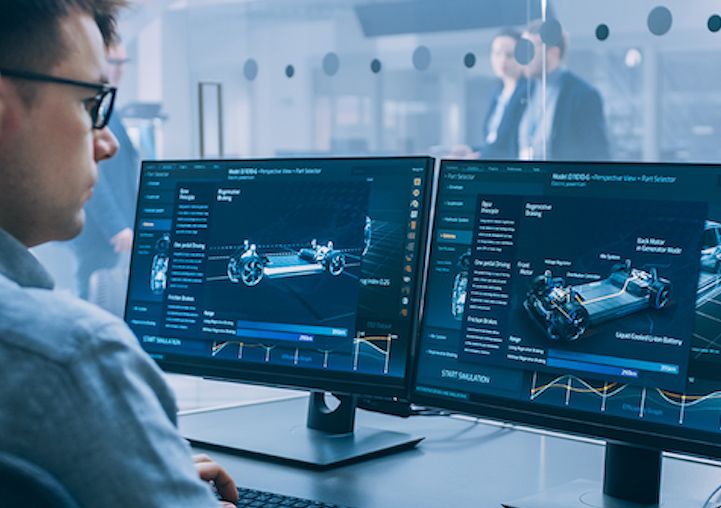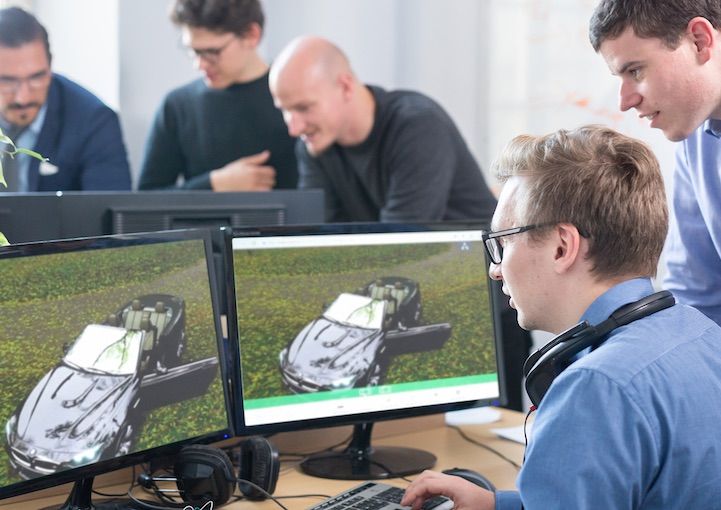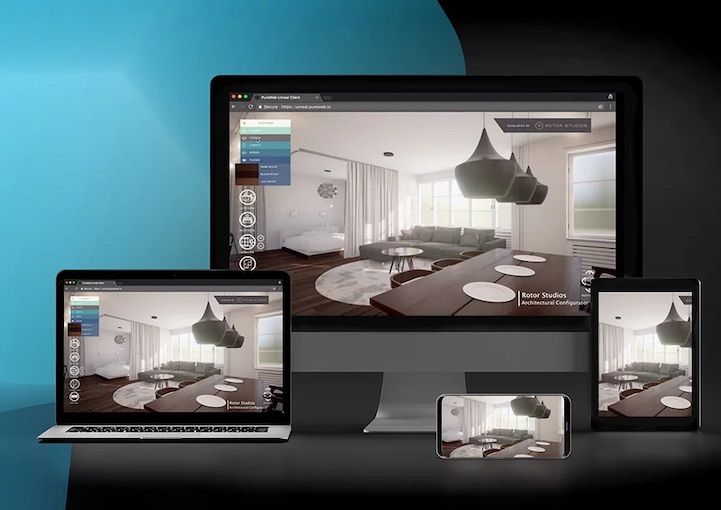INSTANT ON NOW AVAILABLE - Experience Time to first frame as quick as 2 SECONDS
Looking for a Visual Enterprise Collaboration Tool? Be Sure to Ask the Right Questions

Collaboration facilitates innovation. Studies have shown that the cross-fertilization of ideas within multi-disciplinary teams generates game-changing new products and services. But in an enterprise environment, it’s not enough to provide tools - you’ve got to provide the right tools.
For enterprises that manage highly visual projects, an off-the-shelf collaboration tool is a non starter. By 2022, an estimated 70 percent of enterprises will need collaboration tools to simplify workflows and complete projects. If you’re an enterprise in a highly visual industry like construction, manufacturing, architecture, or even gaming, your employees routinely rely on complex graphics for core business activities. Facilitating this work are various tools for computer-aided design, 3D modelling, business information modelling, real-time 3D rendering, and more.
So before committing to a visual collaboration tool, be sure to ask the following questions.
Can your chosen collaboration tool offer enterprise-level support?
Depending on your organization’s size, hundreds of users will rely on your chosen platform. If the work your employees carry out is essential to your core business, you need a solution with carrier grade reliability. A downed system means delays to your production schedule if your manufacturer can’t receive models on time. It means delayed conversations with suppliers who need the visual context provided by your collaboration tool. And it pulls the plug on any interactive demos your sales team had planned for the day.
Read next: 5 questions to ask before buying a 3D collaboration tool
Moreover, your system must withstand the pressure of a large, geographically dispersed team. It also must accommodate an increasingly remote and mobile workforce.
Seventy percent of the global workforce works remotely at least once a week and by 2022, the BYOD device market will hit about $367 billion. The potential cost savings plus the reports by 61 percent of Gen Y workers that their personal devices are more productive than their work devices is moving this trend forward. In addition, executives must be able to access all business systems and channels while travelling.
What should I keep in mind during the procurement process?
For highly visual use cases, graphic fidelity is not an acceptable trade off. But oftentimes, graphics quality is lost in order to stream content to “thin clients” like laptops or tablets. To protect the value of collaboration on visual projects, it’s important to select a solution that’s designed to minimize packet loss during the compression process while successfully streaming to any device.
For instance, the PureWeb Reality platform renders images in the cloud before streaming to users. Since no source files are transferred, users receive high quality graphics without managing high volume data streams.
Where does your collaboration tool store its data?
Streamlined communications ease the flow of information and oil the gears of collaboration. But when it’s done without following data security best practices, it also makes it easier for unauthorized third parties to access internal information.
Today, enterprises run 77 percent of their workloads in the cloud, increasing calls for greater IT governance. Edge devices, the devices that connect an enterprise’s LAN to the internet, can be a vulnerability during data transmissions. While cloud services increase an enterprise’s productivity, they can increase an enterprise’s risk levels as well if they aren’t managed correctly.
What should I keep in mind during the procurement process?
When your business model relies on proprietary models, your 3D files carry valuable intellectual property. Your collaboration tool should focus on moving only what’s necessary to collaborate. Ideally, source files are kept securely on the server, rendered in the cloud, with only the final product streamed to the end user.
Can your collaboration tool integrate with other software services?
An enterprise deploys 464 custom applications. Ensuring all of these work quickly becomes a headache. Over half of these applications are used exclusively by internal teams (e.g. accounting, sales software) while about 36 percent are consumed by external users (e.g. customer service touch-points, point of sale systems). Since your collaboration tool is meant to streamline processes - not make them more difficult - it’s important for your chosen solution to integrate well with other tools in your enterprise’s tech suite.
If you like this, read this: 4 trends steering the future of collaboration through 3D visualization
What should I keep in mind during the procurement process?
Collaboration tools for highly visual enterprises require more attention than non-visual use cases. While it’s easy to set up an enterprise-wide messaging app, a 3D collaboration tool calls for a fully managed solution that allows you to effortlessly share multiple applications and models.
Does your chosen solution contribute to lowering your operational costs and streamline workflows
A graphics-rich collaboration tool has the potential to generate revenue through increased collaboration. But it should also reduce your operational costs in the interim. Interactive 3D experiences, like virtual reality and augmented reality, offer cost-saving use cases. For instance, your enterprise can reduce the cost of expensive training costs without compromising the quality of the sessions by eliminating airfare and accommodations and giving employees access to a 3D collaboration platform.
An interactive 3D collaboration tool also streams multiple applications. Enterprises are often forced to purchase multiple licenses just to simply share their work with teams for review.
Ultimately, your chosen solution should streamline your complex workflows. In enterprises defined by highly visual projects, the number of collaborators and specialized software required to get a project from initiation to completion can create bottlenecks. From initial sketches in your 3D modelling software to rendering in game engines like Unity and Unreal, there are briefings, reviews, feedback, and approvals. The back and forth that comes with transferring files delays the process when a face-to-face meeting can speed a project along, especially when an interactive 3D experience requires nothing more than a link.
What should I keep in mind during the procurement process?
Does your potential tool offer a true zero-footprint experience? Meeting participants should be able to enter a secure, collaborative platform to share, discuss, and interact with content streamed from multiple applications. Moreover, your meeting participants should be able to access the meeting with nothing more than a link, eliminating the need to install any applications.
Learn more about streamlining your visual enterprise workflows. Book a demo with a member of the PureWeb team, and we can discuss your needs for secure collaborative visualization with no downloads, and a zero footprint experience.


